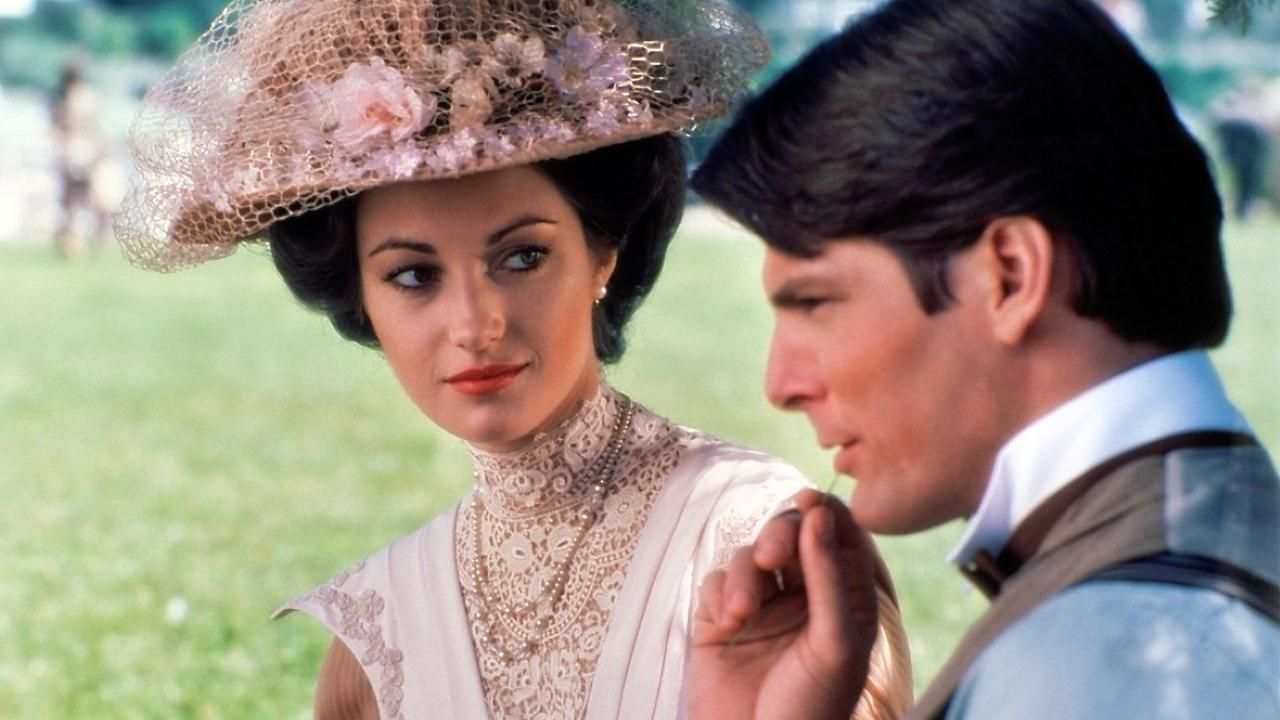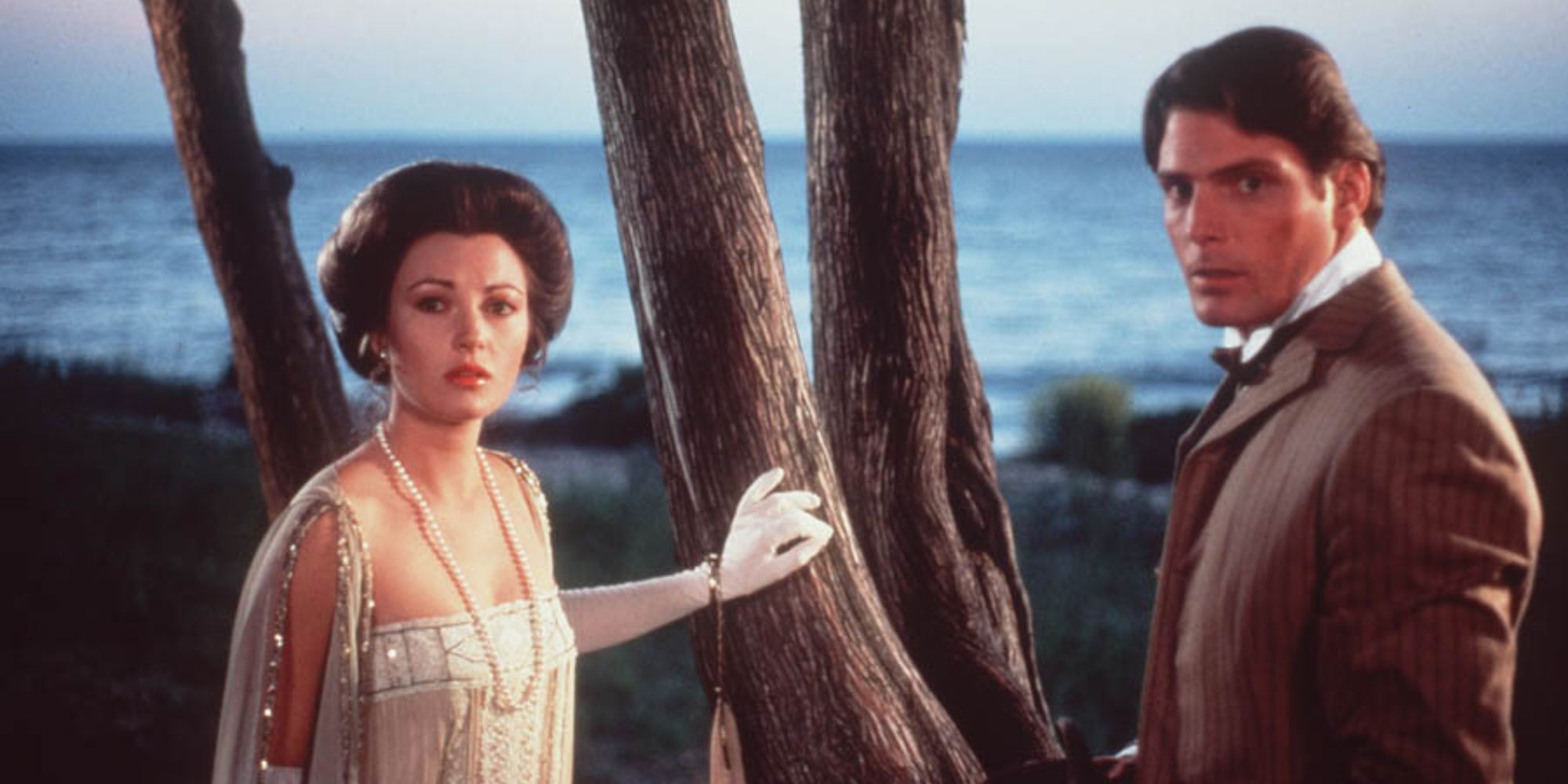The Big Picture
- Somewhere in Time is a romantic film with a science-fiction angle, directed by Jeannot Szwarc and starring Christopher Reeve and Jane Seymour.
- The film takes a unique approach to time travel, focusing more on the story and characters rather than explaining the mechanics.
- Reeve and Seymour deliver captivating performances, creating a courtship that is both heartfelt and lasting.
In 1978, Richard Donner made audiences believe that a man could fly when he directed Christopher Reeve as Superman. The film was a precursor to the current big-screen superhero craze and made Reeve an overnight sensation — an actor plucked from relative obscurity to become one of the most sought-after commodities in the throngs of Hollywood. The six-foot-four star with Clark Gable’s face and Dean Martin’s charm was the perfect choice for a romantic leading man, and he filled those shoes most admirably in 1980’s Somewhere in Time.
Somewhere in Time is something of an anomaly of movie-making, existing as both a romance and a science-fiction film. (It almost could be considered a gender-swapped precursor to Outlander.) The film is written by Richard Matheson, whom many may recall as the author of such seminal classics as I Am Legend, What Dreams May Come, and The Incredible Shrinking Man, and was adapted from his own novel. It’s directed by Jeannot Szwarc, coincidentally the same man who would go on to direct Supergirl in 1984. And while Somewhere in Time features a heavy science-fiction angle (unsurprising considering its creators), it is regarded as one of the most romantic films of its era, chiefly due to the performance of Reeve and his co-star, Jane Seymour.
The Sweeping Romance of ‘Somewhere in Time’
Reeve stars as Richard Collier, a playwright in Chicago who has his first major production staged in 1972. As the cast celebrates a successful show, an old woman approaches him and places an ornate pocket watch in his hand, bidding him to “come back to me.” Baffled, he shrugs off the exchange. Cut to eight years later, and though he’s an in-demand success, he seems to have hit a roadblock of sorts in his writing. He takes the opportunity to have a brief holiday, finding himself at the Grand Hotel on Mackinac Island in New York (now a popular tourist destination for fans of the film). Hungry and waiting for the restaurant to open, he saunters into the Hall of History. There’s no suspension of disbelief in asserting that most playwrights are also historians. To expound upon the human experience is to study it in its entirety, and often the writer finds themself shedding the contemporary for a clearer view of humanity. He ganders at the memorabilia, bemused, until the camera pulls in on him slowly as he turns to glimpse a portrait. Mouth agape, eyes shining, he walks dumbfounded towards a photo of an actress from a time forgotten, passing through a ray of sunshine as a being ascending Heaven’s heights. A wry smile crosses his lips as he recognizes something familiar in her eyes, and he notes that her nameplate is missing.
He launches an investigation, once again flexing the particular muscles of the playwright, which leads him to an old philosophy professor who extols the possibility of time travel through self-hypnosis. As he finds that his life and the woman’s life are intrinsically linked, he endeavors to time-travel to 1912 to meet the mysterious actress, whom he has identified as Elise McKenna and confirmed that she was the old woman he’d met briefly eight years prior. He purchases an old suit, old coins, and cuts his own hair to match the preferred style of the early 1900s, and then begins the arduous task of willing himself backward through time.
‘Somewhere in Time’ Takes the Science Out of Science Fiction
Somewhere in Time pulls off a brilliant trick with its time-travel conceit — it doesn’t justify it all. Like Ashton Kutcher’s journal scribblings in The Butterfly Effect, it dares you to question how a person can travel through time, essentially asking, “Do you have a better idea?” Less concerned with hackneyed theories than propelling the story forward, the film quickly moves to Reeve’s Collier waking up in 1912. The proceeding scenes find him bumbling his way through history, a clever juxtaposition of his imposing frame and flair for physical comedy. Much as he did with Clark Kent in Superman or his later work in Noises Off, the brilliant actor makes use of his physicality for the delight of the viewer. As in Superman, the act humanizes him and builds empathy, allowing the viewer to fall further into infatuation with the character. When he finally meets the younger version of Elise, the attraction is instant. She is inexplicably drawn to him, despite the interference from her domineering manager, William Fawcett Robinson (Christopher Plummer), who also appears to be a man outside of time.
Being adapted by Matheson, himself, Somewhere in Time succeeds by stripping both the science and the fiction from its science-fiction backbone. Though it takes a full 35 minutes of the film’s runtime to cast our principal back in time, it means little to the story or the viewer how the feat was achieved. It’s a strange paradox: The amount of time spent on the time travel is immense, and the film comes from a master of genre fiction as well as a director of particular genre conceits (Jaws II, The Murders in the Rue Morgue). So Somewhere in Time seems designed to draw the interest of fans of the genre. However, the film endures today not as a fantasy but as a romance, and it’s not hard to see why.
Reeve and Seymour Take Part in a Courtship for the Ages
Collier’s courtship of McKenna is wrought with despair, as he stumbles through a comedy of errors to find her, only to be rebuffed by her and her overbearing manager. Still, she senses in him some mercurial connection that she cannot deny. As he wears down her defenses, through sheer determination alone, the viewer finally begins to see him through her eyes. A prolonged romantic montage takes place, largely silent, and McKenna appears smitten by the sincerity of this tall man who claims to know her implicitly and desires to acquaint himself with her intimately. Through stolen moments, the two fall madly in love. It’s a particularly masculine depiction of love in the 80s — he fell in love with a photograph, she fell in love with soul — but the camerawork and score gloss over the cracks enough to keep the viewer invested in their happiness. Short-lived, though it may be.
Reeve is magnetic in the role, truly embodying a man smitten with his crush. The word carries much weight, as he is almost literally immobilized by the enormity of his infatuation with the star, ready to forego the life he abandoned in his future past just to be near her for as long as possible. His mouth is perpetually agape, a sieve for his steaming affections as he trails after her from scene to scene like a cartoon cat on the wafting scent of a cooling pie. Seymour, to her credit, does the best she can with the thinly developed character of McKenna, a woman resigned to react to those who would love her and those who would exploit her. When the film offers a very stylistic lead-in to a steamy sex scene, the audience is on board. Whether they believe that McKenna loves Collier or just wants one moment of agency, the scene works, regardless.
The aftermath finds the lovers engaged in the smallest of talk, and it is in this asinine exchange that Collier’s illusion is shattered. The scene that finds Collier hurtling forward through time is one of the most gut-wrenching sequences put to film, largely due to the fact that the audience has become invested in the romance between the leads. As each falls into despair, the film ends tragically, though with a glimmer of hope in the imagination of its leads. Once again, it is the will power of the lovers and their disassociation with time, their situation, or indeed the tragedy of reality that allows the film its being. The viewer is again asked to believe because the principals believe.
While audiences cheered at Reeve flying, bending steel, turning back time, pratfalling, or pontificating in his other works, Somewhere in Time gave them something to truly cheer for: love, in its most bare and embarrassing form. It’s Christopher Reeve in his most swoon-worthy role, a man who willed himself through time for a date with a photograph, creating a treasured classic that has lasted beyond the man himself.






